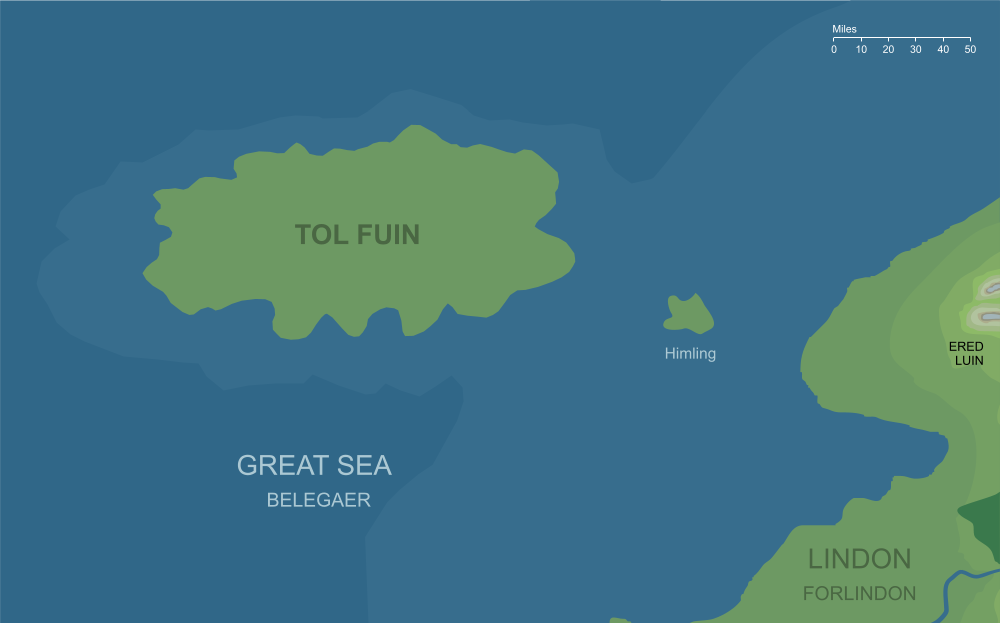- Cities and buildings
- Fields, plains and deserts
- Forests
- Hills and mountains
- Islands and promontories
- Lands, realms and regions
- Rivers and lakes
- Seas and oceans


 |
||||||
|


Which personality type are you?
Take the Free mydiscprofile Personality Test to discover your core personality and your ideal job.   Which personality type are you? |
|
Dates
Formed in the cataclysm at the end of the First Age
Location
Off the northwestern coasts of Middle-earth, beyond the island of Himling
Origins
The highlands of Taur-nu-Fuin surrounded by the Great Sea
Pronunciation
to'l foo'in
Meaning
'Isle of nightshade'1
Indexes: About this entry:
|
Tol FuinThe remnant of Taur-nu-Fuin
The island of Tol Fuin (somewhat conjectural)2
The island of Tol Fuin (somewhat conjectural)2
In the Great Sea off the northwestern coasts of Lindon in the farthest west of Middle-earth, lay the small island of Himling. This was a remnant of the First Age, being the surviving peak of the old fortified Hill of Himring. Westward beyond Himring a great highland region had risen during the First Age known as Dorthonion or Taur-nu-Fuin. After the Sea covered the lands of Beleriand at the end of that Age, the highest parts of Taur-nu-Fuin also survived as an island: Tol Fuin, out in the Western Sea beyond the tiny isle of Himling. While Himling appears on the maps of Middle-earth within The Lord of the Rings, Tol Fuin does not. It lay further out to sea, just beyond the western edge of those maps, to the westward and slightly northward of Himling. It does, however, appear on earlier versions of the maps (reproduced in volume VII of The History of Middle-earth). From that source we can see that it was roughly oval in shape, but with many small bays especially along its southern side. It was considerably larger than Himling, running approximately a hundred and fifty miles from west to east, and about eighty from north to south. It's an open question whether there were any inhabitants on Tol Fuin in the later Ages. The island would have been easily accessible to the mariners of Lindon, and with a land area roughly comparable to Sicily or Vancouver Island, it would seem an obvious possibility that it might have been colonised at some point. On the other hand, the land had been under the power of Morgoth during the later part of the First Age (hence its name Taur-nu-Fuin, 'Forest under Nightshade') and so the Elves may very well have shunned it and chosen to leave it unpeopled. Notes
Indexes: About this entry:
For acknowledgements and references, see the Disclaimer & Bibliography page. Original content © copyright Mark Fisher 2000, 2017, 2020. All rights reserved. For conditions of reuse, see the Site FAQ. Website services kindly sponsored by Axiom Discovery aptitude and skill testing.Axiom Discovery gives you comprehensive online aptitude testing covering core skills across a wide range of disciplines. |